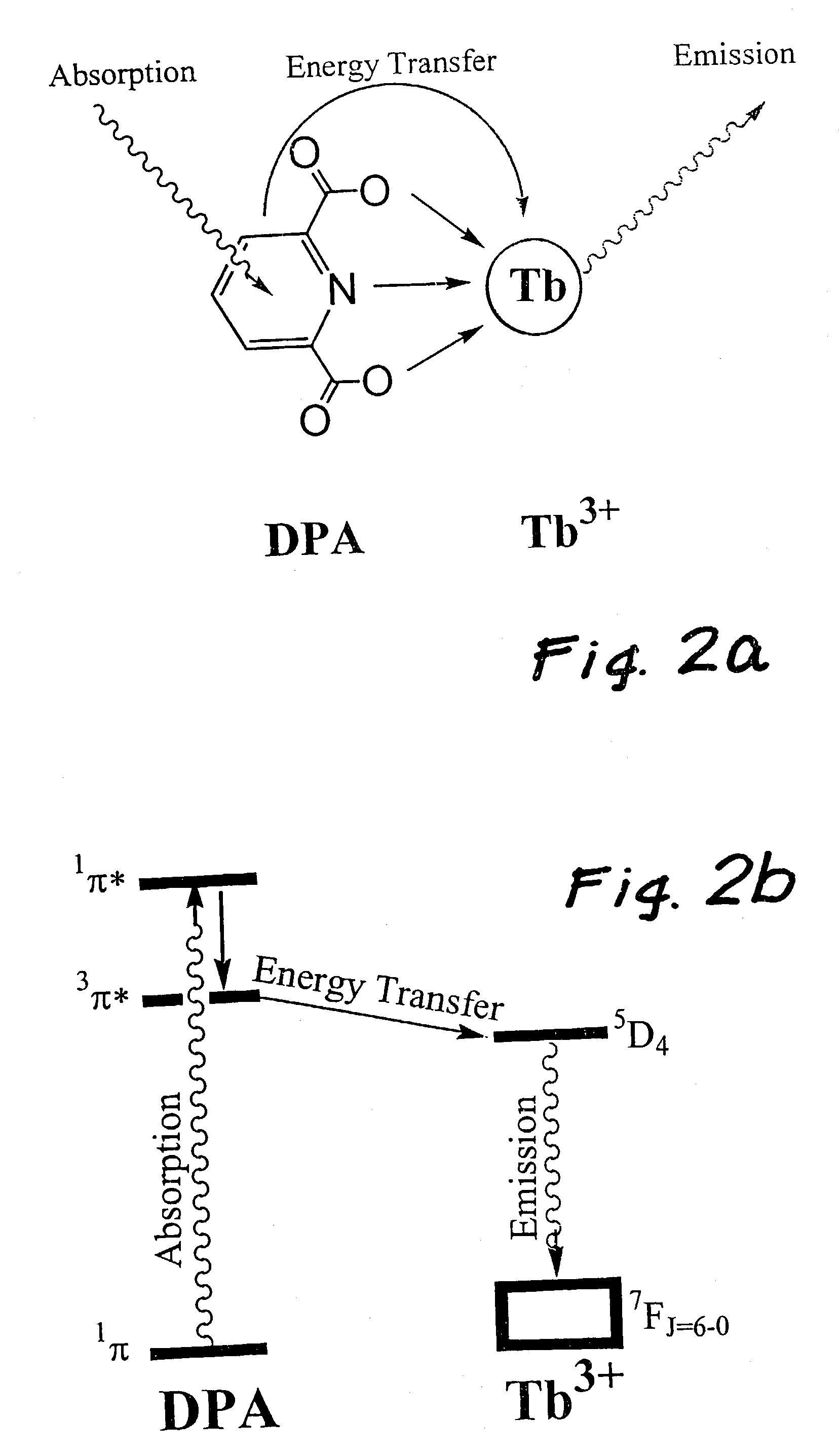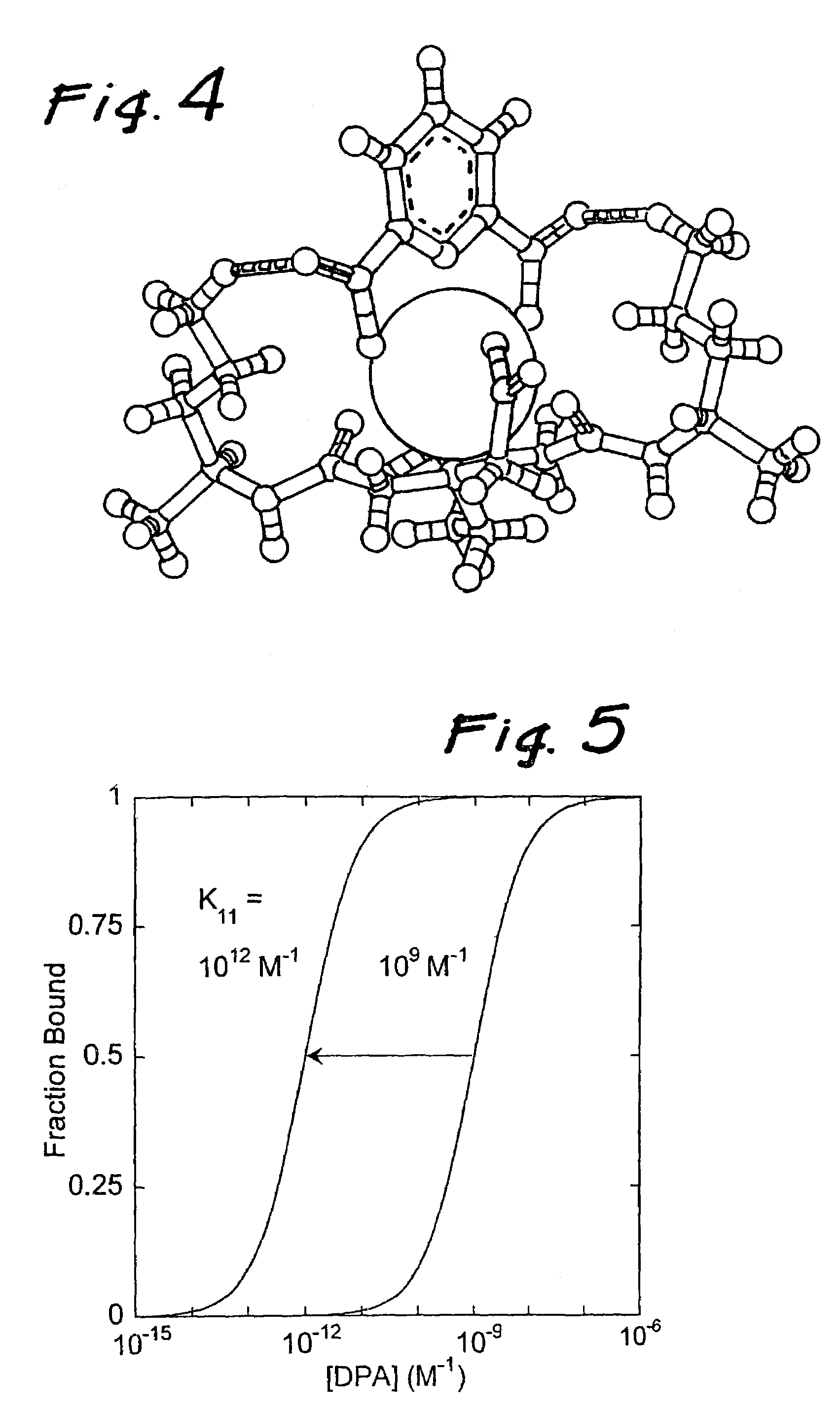Method bacterial endospore quantification using lanthanide dipicolinate luminescence
a technology of lanthanide dipicolinate and bacterial endospores, which is applied in the field of method bacterial endospore quantification using lanthanide dipicolinate luminescence, can solve the problems of increasing the cost and technical difficulty of endospore production, etc., to achieve the effect of improving the sensitivity of bacterial endospor
- Summary
- Abstract
- Description
- Claims
- Application Information
AI Technical Summary
Benefits of technology
Problems solved by technology
Method used
Image
Examples
Embodiment Construction
[0036]The molecular design considerations of the invention enhance the detection limit by over three orders of magnitude. The design features a complex comprised of a central lanthanide ion that is caged by a multidentate ligand that gives rise to cooperative binding of dipicolinic acid through additional binding interaction to the dipicolinic acid (e.g., hydrogen bonds or electrostatic interactions). Cooperative binding is defined as a net increase in binding constant of dipicolinic acid to lanthanide complexes binding with respect to dipicolinic acid binding to lanthanide ions (i.e., the lanthanide aquo complex). An increase in binding constant results in larger fractions of dipicolinic acid bound to the lanthanide molecules at low dipicolinic acid, which consequently increases the sensitivity of the bacterial spore assay since dipicolinic acid binding triggers lanthanide luminescence. In addition, the multi-dentate ligand serves to increase the quantum yield by an order of magnit...
PUM
 Login to View More
Login to View More Abstract
Description
Claims
Application Information
 Login to View More
Login to View More - R&D
- Intellectual Property
- Life Sciences
- Materials
- Tech Scout
- Unparalleled Data Quality
- Higher Quality Content
- 60% Fewer Hallucinations
Browse by: Latest US Patents, China's latest patents, Technical Efficacy Thesaurus, Application Domain, Technology Topic, Popular Technical Reports.
© 2025 PatSnap. All rights reserved.Legal|Privacy policy|Modern Slavery Act Transparency Statement|Sitemap|About US| Contact US: help@patsnap.com



